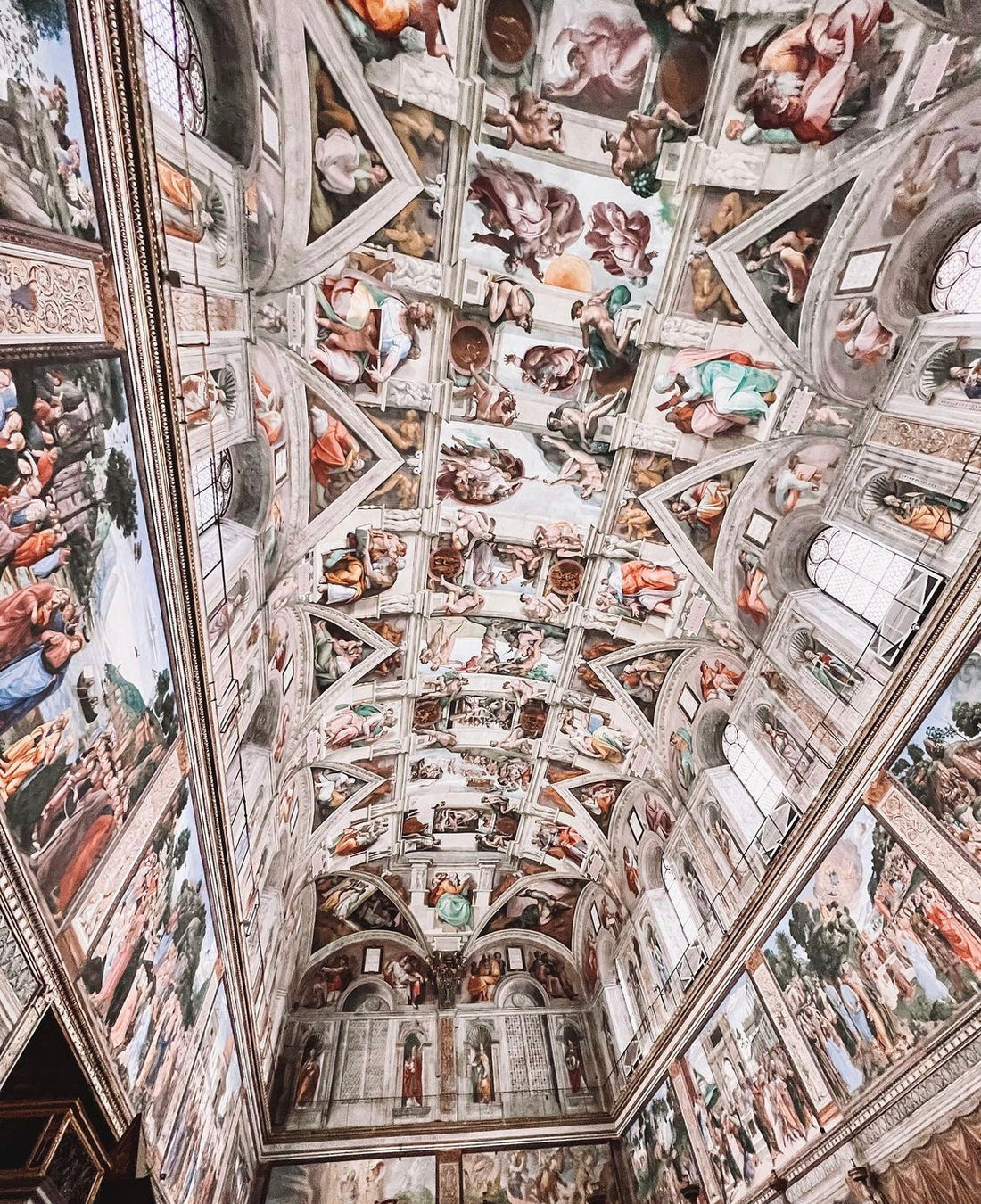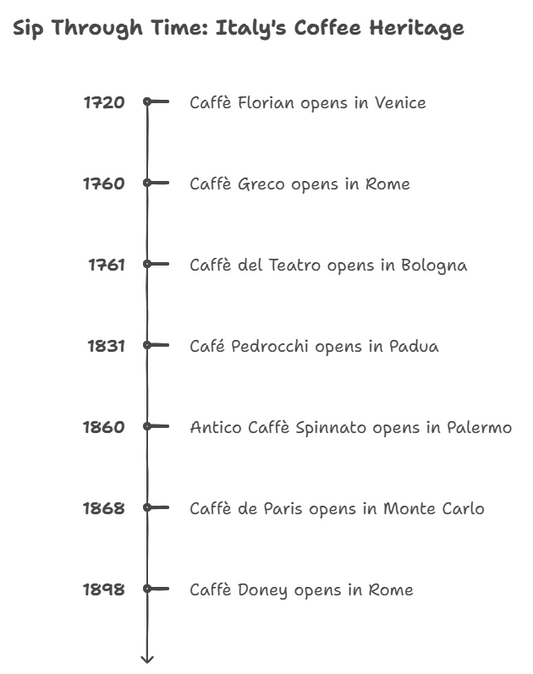Nestled in the heart of Vatican City lies one of Italy’s most cherished landmarks - the Sistine Chapel.
Its interior walls and ceiling are resplendent in frescoes designed by numerous Italian Renaissance masters. One of these masters is none other than Michelangelo who is arguably one of the greatest artists of all time.
How did Michelangelo paint the Sistine Chapel?
Michelangelo and his team adopted the mezzo-fresco technique to paint the ceiling, using 3 layers of plasters before spreading sand lime over the wall and then applying a kaleidoscope of colors while the wall was damp.
His frescoes in the chapel alone have drawn around 25,000 visitors a day due to the immense level of precision, as well as creative depictions of personages and events from the Old Testament.
Read further on what his process was like.

Credits: @_shawnagriff on Instagram
Timeline of Sistine Chapel
For 4 years between 1508 and 1512, Michelangelo worked night and day at the chapel’s ceiling. This is truly a mighty feat, as it took around 9 years for the chapel artworks to be cleaned and restored between June 1980 and October 1984.

Credits: Artnet News
Type of medium used in Sistine Chapel
Akin to the other Florentine Renaissance painters, Michelangelo adopted the mezzo-fresco technique to paint the ceiling.

Credits: Traditional Building Magazine
Dating back to as early as the Egyptian times, this specialist fresco technique involves quickly painting natural earth pigments on washes of fresh (translated into fresco in Italian), wet lime plaster before it dries. This explains why Michelangelo and his team of artists had to work on small sections (called giornata) at a time to ensure that each of them was fully painted before the plaster dried. Due to this methodical, careful method of painting, the giornata remains perceptible to date. Furthermore, working on small sections was crucial in avoiding errors. Otherwise, the entire area on which an oversight was made would have to be scraped off and repainted.

Some of the many giornata (Credits: artincontext)
To prepare the plaster, Michelangelo and his team used
- 3 layers of plaster: a rough scratch layer, a brown layer, and a delicate layer as the painting surface.
- Next, they mixed sand and lime before spreading the mixture over the wall.
- They then applied a kaleidoscope of colors while the wall was damp.
- Once dried, the colors chemically fused with the sandy lime mixture to form a permanently colored ceiling wall.
Due to unfamiliarity with the technique at first, they used red and black chalk to draw up hundreds of sketches on paper before transferring them onto the freshly plastered surface. Once they became weaned on the fresco medium, these sketches were dismissed.
* Fun fact: Red chalk was the main medium for nude art due to its malleability.

One of the sketches done (Credits: Web Gallery of Art)
To create the illusion of three dimensions, Michelangelo scraped off some of the wet mediums before he painted. This created outlines around the figures he painted, which became one of his artistic trademarks.
The physical effort involved in Sistine Chapel
You might have heard about how Michelangelo merely laid on his back, tranquility painting away but this is just a folk tale. In actuality, he and his assistants were standing on the wooden plank of a scaffold that he had built.

Credits: Unreal Engine
The scaffold was designed to move them across the chapel so that they could paint the different giornata. This was rather painstaking as they had to mix a huge batch of plaster, splash it onto the walls, and without delay, paint on them before the plaster hardened and dried. Not only that, they had to have solid upper body strength with all of the lifting, scribing, and tilting of the head up that they had to endure as they painted above their heads. 60 feet up in the air!
Such manual work was done daily, ultimately inflicting much back pain on Michelangelo which he had expressed discontent in the form of a poem and a letter. Indeed, all of the hard work and dedication of the team bore many fruits and reverence at the end of the day.
If you are interested in building and history, you can also read our post on the history of the Rialto bridge, ancient pasta, and Bergamo.




